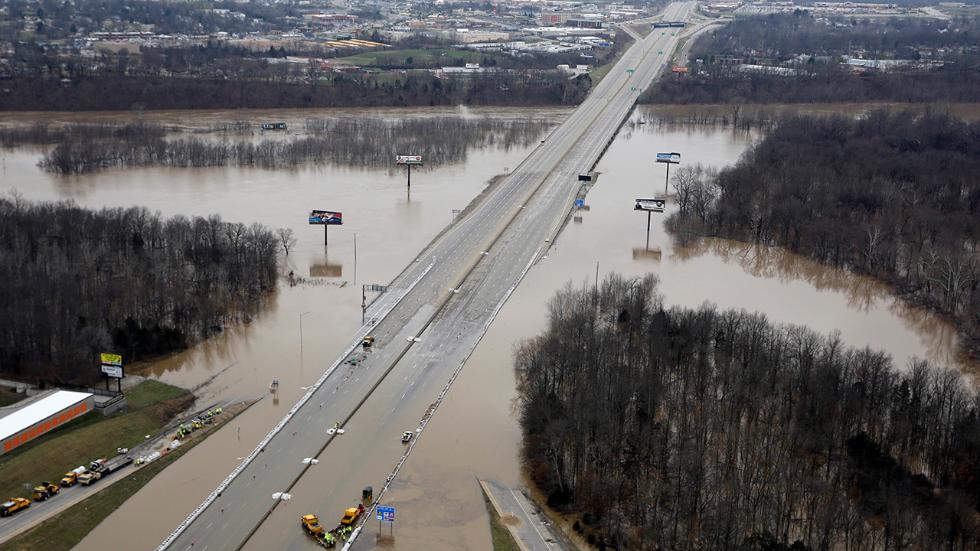
In this aerial photo, floodwater covers Interstate 55, Thursday, Dec. 31, 2015, in Arnold, Mo. Surging Midwestern rivers forced hundreds of evacuations, threatened dozens of levees and brought transportation by car, boat or train to a virtual standstill Thursday in the St. Louis area. (AP Photo/Jeff Roberson)
Dozens of counties in Missouri, Arkansas and Illinois declared disaster areas
Evacuations around St Louis as river levels set to rise again on Thursday
Floods swamp Missouri, Illinois; nine million people in risk areas
reuters.com - by Mary Wisniewski - December 31, 2015
Record flooding from rain-swollen rivers has washed out hundreds of structures in Missouri, Illinois, Arkansas and eastern Oklahoma, forcing thousands to flee their homes, and 9.3 million Americans still face flood warnings.
At least 28 people have died in the U.S. Midwest's extreme weather since the weekend, mostly from driving into flooded areas after storms dropped up to 12 inches (30 cm) of rain, officials said.
The days of downpours have pushed the mighty Mississippi and its tributaries to record highs or levels not seen in decades, the National Weather Service and local officials said.
Recent Comments